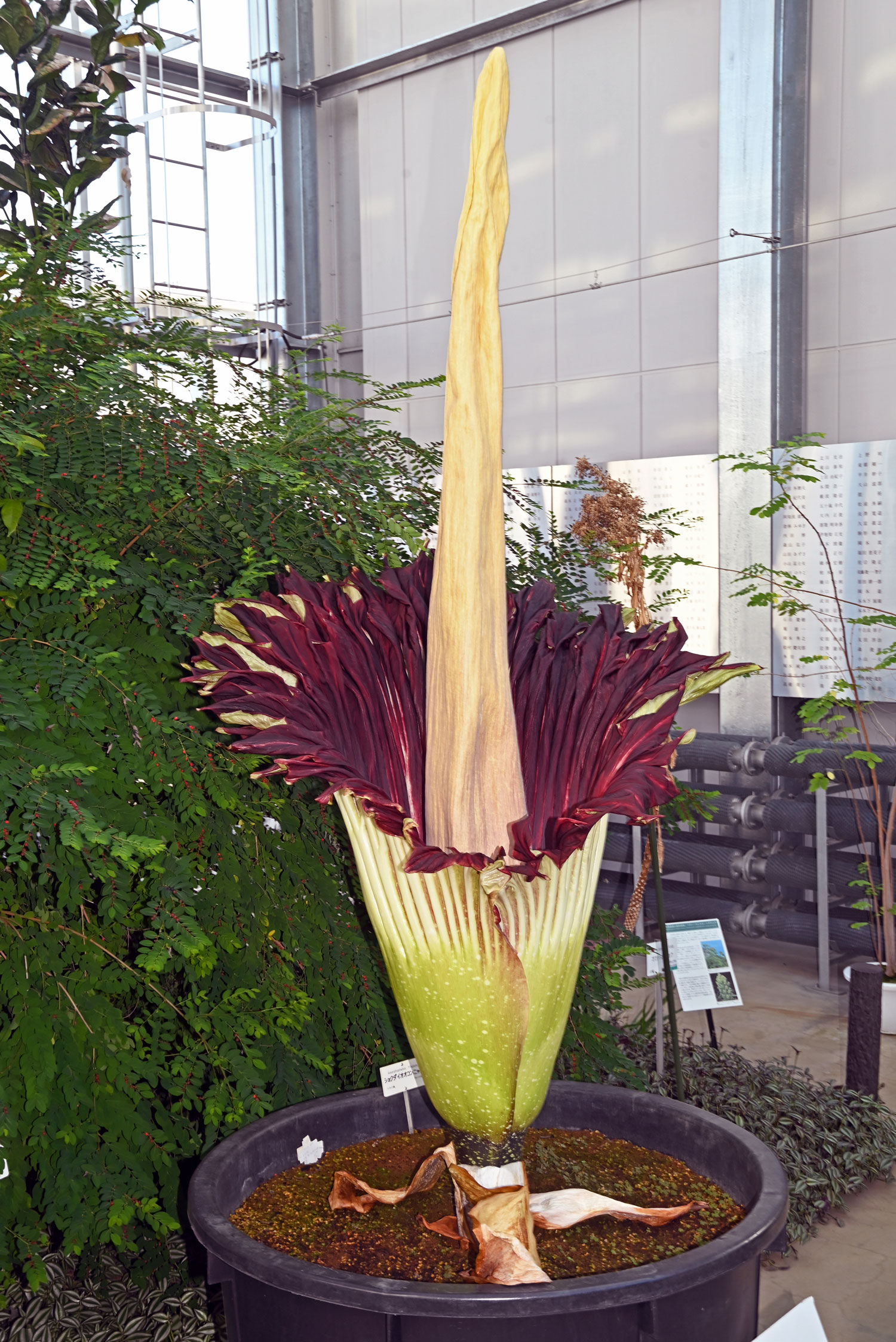Disclaimer: machine translated by DeepL which may contain errors.
"Shokudai O'konjaku" (Amorphophallus titanum) blooms for the first time in 13 years
Atsushi Kawakita, Director of the Botanical Garden (Koishikawa) / Professor, Department of Biological Sciences

Shokudai giant konjac on the morning of December 8, 2023 (Photo by Hitoshi Murata)
On the evening of Thursday, December 7, 2023, the world's largest inflorescence, the Shokudai Botanical Garden, bloomed for the first time in 13 years at the Botanical Gardens (commonly known as the Koishikawa Botanical Garden), an affiliated facility of the Graduate School of Science. This is the third blooming of this species at Koishikawa Botanical Garden, following the first blooming in Japan in 1991 and the second in 2010.
In a normal year, the giant konjak produces one huge leaf above the ground to photosynthesize and store nutrients in its underground tuber (potato). Flowering does not occur in a fixed cycle, and when the corms grow large enough over a number of years, a huge inflorescence appears one year. The inflorescence this time was 215.5 cm tall, and the diameter of the reddish-purple inflorescence bracts, which spread like petals, was 110 cm. Although the botanical garden staff confirmed the blooming on the morning of December 8, the time-lapse camera recordings showed that the bracts began to open around 7:00 p.m. on December 7. The famous "rotten fish smell" is strongest at night, and this smell lures pollinating insects. Towering at the center of the inflorescence is the stem end, called the appendage (the flower is inside the lower part of the appendage, covered by a flame bract), which generates heat and carries the odor farther. The world of plants is a mystery as to why it was necessary to develop such a large inflorescence in order to allow insects to carry pollen.
From December 8 to 10, the day after the blooming, the greenhouse was open to the public for extended hours, and more than 10,000 visitors came to see the powerful deformities.
The Rigaku-bu News, January 2024


